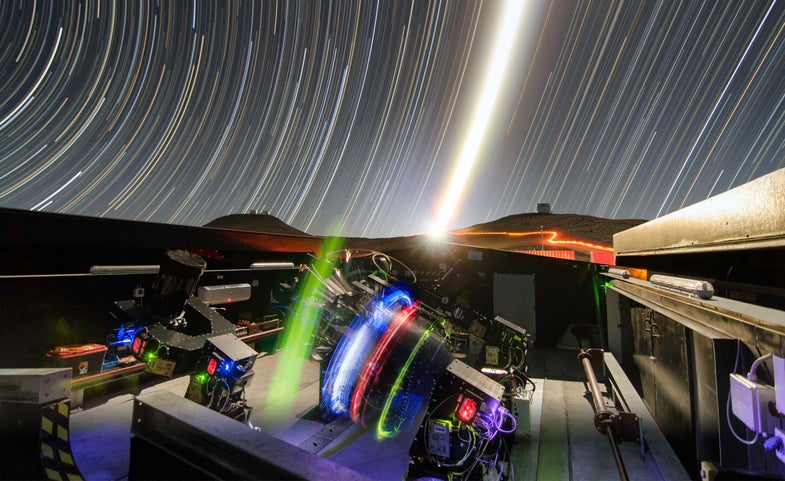New Super-Earth-Hunting Telescope Array Opens Its Eyes To The Sky
Introducing the Next-Generation Transit Survey, the sharpest exoplanet-seeking scope on Earth

Oh, snap. A powerful new array of telescopes took its first pictures, the European Southern Observatory announced today. “First light” photos aren’t always scientifically interesting, but in the years to come, the Next-Generation Transit Survey will take images of planets orbiting other suns, seeking worlds that look a bit like Earth.
The survey, which is based in the European Southern Observatory’s Paranal Observatory in Chile, will look for moments when distant stars dim temporarily. Periodic dimming in stars is a sign that there’s a planet there that has transited, or passed, between the star and Earth. (You might remember NASA’s Kepler Space Telescope also looks for transits.) Bigger planets cause more obvious dimming, but for this survey, astronomers are most interested in planets closer in size to Earth than easier-to-spot gas giants such as Jupiter. Thus, the Next-Generation Transit Survey will seek “super-Earths” about two times to eight times the size of humanity’s home world. The survey array measures the brightness of stars more accurately than any other ground-based telescope.
In the time-lapse photo above, you can see the Next-Generation Transit Survey with its instruments on for testing underneath a star-filled sky. The big streak of light in the sky is the moon. In the hills in the distance, you can see two other telescopes: the Visible and Infrared Survey Telescope for Astronomy on the left, and the Very Large Telescope on the right.

Inside the Survey
The Next-Generation Transit Survey will scan for super-Earths automatically, running a computer program that doesn’t require a person to supervise. If it detects interesting transits, astronomers will pass on the information to larger telescopes, such as the Very Large Telescope, which can try to ascertain the planets’ composition.

Shiny